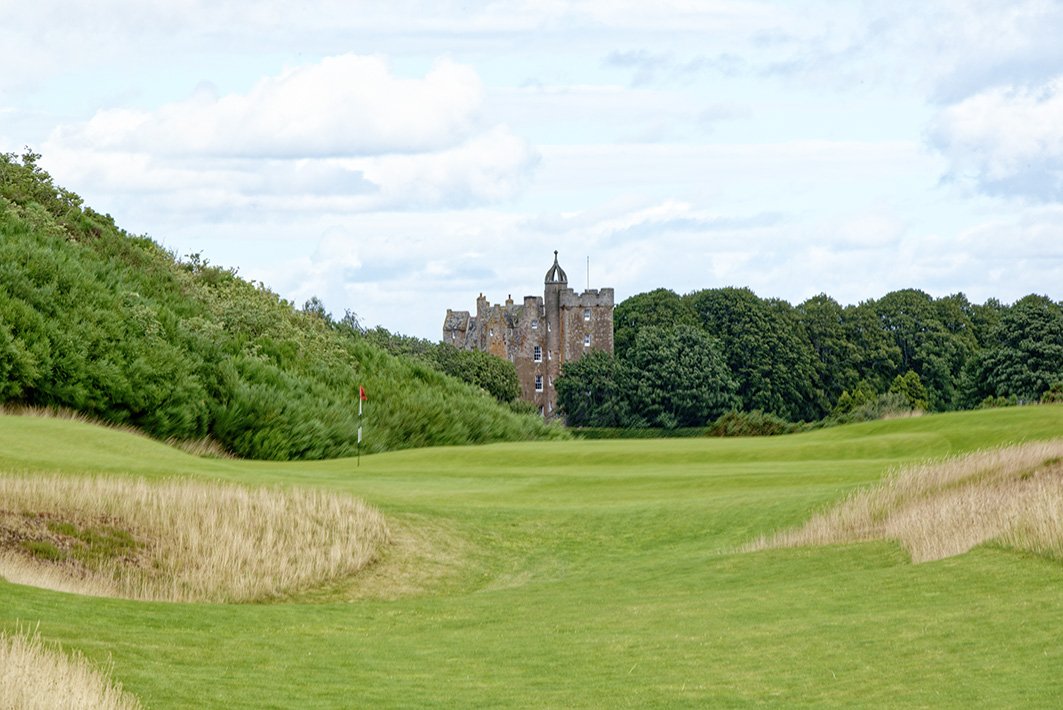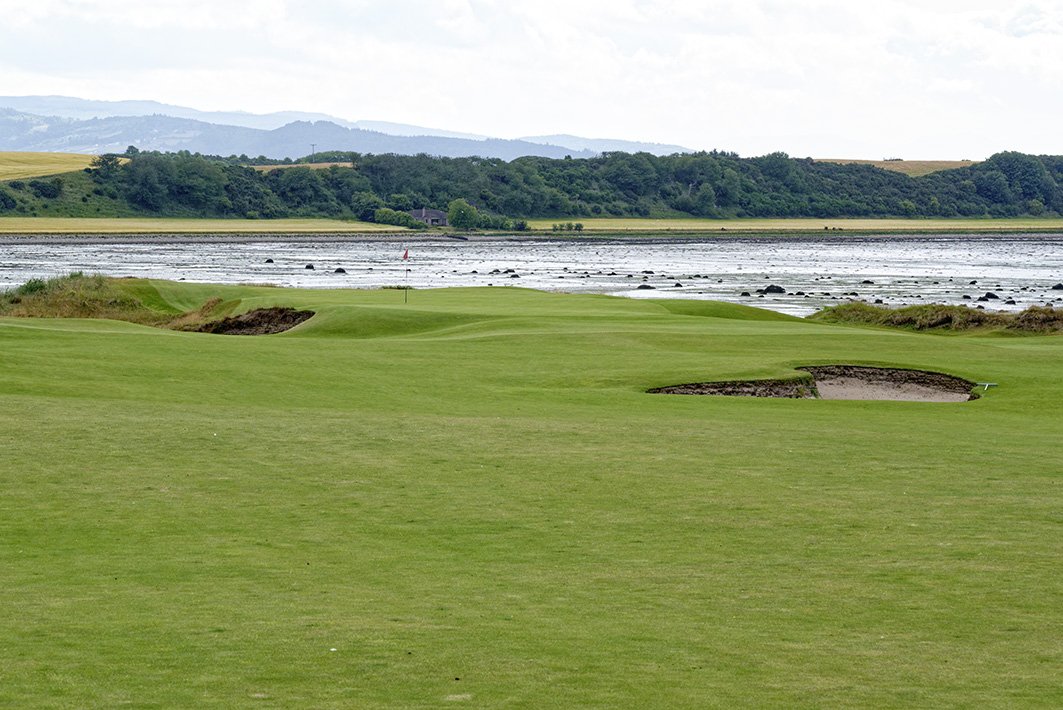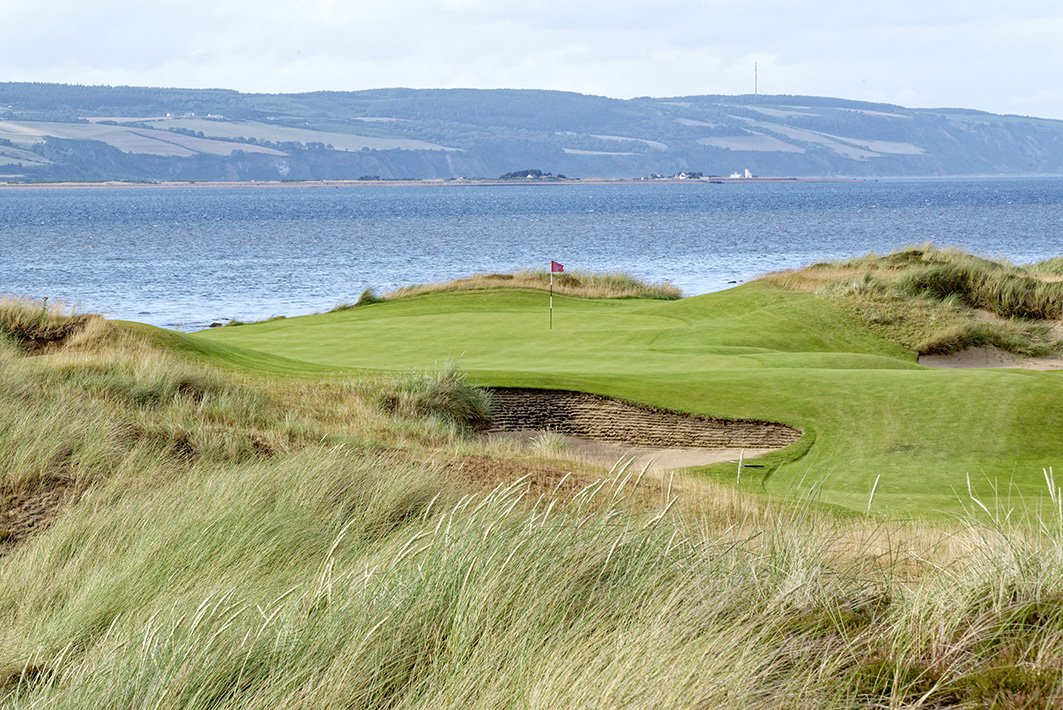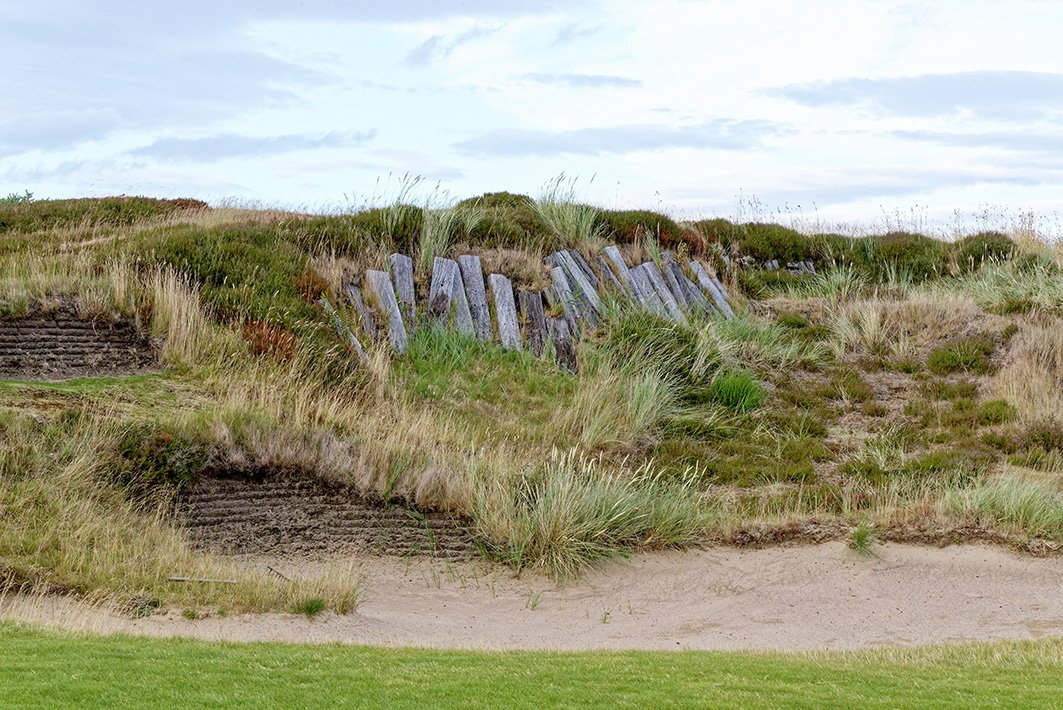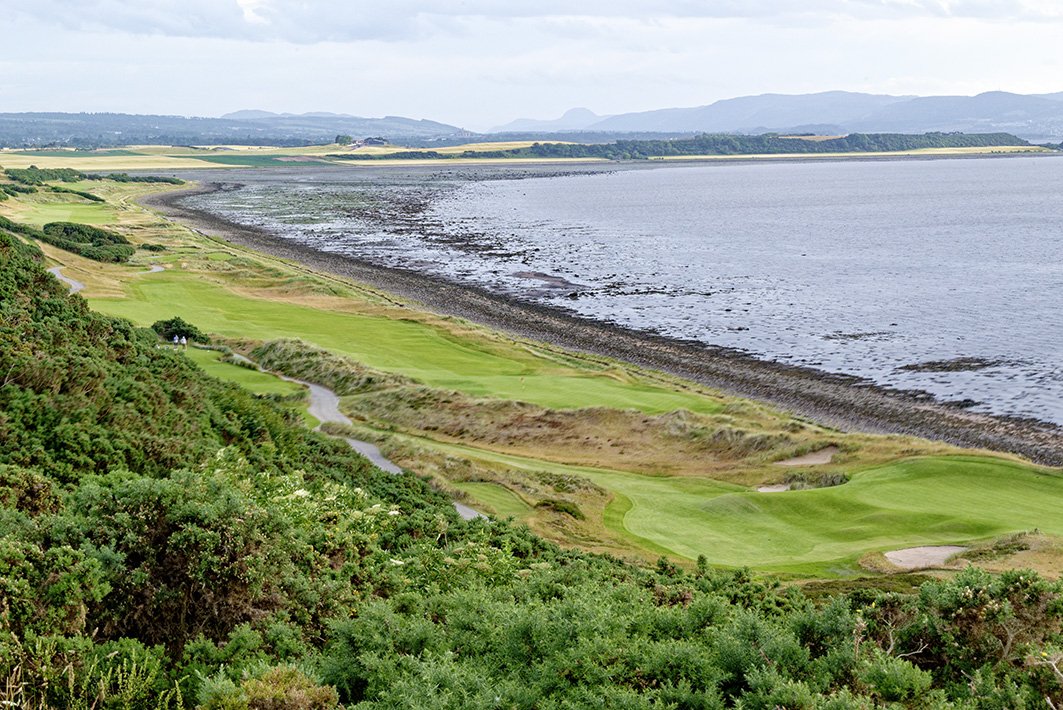Castle Stuart goes Cabot Highland
In conversation with Stuart McColm, Castle Stuart Golf Links
On the occasion of the 150th The Open, golfmanager visited the "Home of Golf" (editor's note: St. Andrews) and the Old Course as well as other worthwhile courses. In addition to a general introduction in the article "Scotland's golf scene - much more than St. Andrews and The Open", author Michael Althoff conducted the following detailed interview with Stuart McColm, General Manager of Castle Stuart Golf Links.
? What was the reason to sell the venue by former owners, how has the contact to Cabot been established?
! Mark Parsinen, our founder and visionary owner, always had a resort type agenda. With the first tournaments being held here, especially the Scottish Open, we were able to prove that this venue is an amazing addition to the golf map within this region. Mark always planned to have another investor to come in and bring the resort forward. He had talks to numerous potential investors, e.g. in 2015 with the Palmer Group, which was highly interested in joining us here and building a second course.
? Why did the Palmer Group not become the investor?
! Unfortunately, Mr Palmer passed very sadly and untimely, and in 2019 also Mark had passed at the age of 70, which was a real shock for everybody! So it has been tough to continue the seek for our investment partner without our leader. With Covid in 2020 we did not have much time in between for our board and the family. There was a clear belief that a new investor would like to take ownership control – and Mark was ready for this. When the Cabot Group started to look for a suitable investment in Scotland, Ben Cowan-Dewar quickly realized for various reasons that the Highlands, first and foremost with Castle Stuart, the airport nearby and the infrastructure were a great place to invest.
? Have they taken ownership control as expected?
! Yes, they have. The Parsinen family and trust have moved out of the business, only one former partner is still holding 20% of the shares, the rest belongs to Cabot. Cabot sees this very nicely fitting with their portfolio around the world.
? How about branding and naming of the resort and the courses?
! Well, Cabot Highlands will be the resort, they want to take this resort and build it out in full. For them, it means they don’t have to start from scratch in Scotland. Castle Stuart, the first golf course, is already generating cash and has a reputation as a top 100 golf course in the world. They can nevertheless put their stamp on the resort aspect as well as on the second course. So for Cabot, this venue and the circumstances are clearly what we call ‘serendipity’.
? Will Cabot turn the venue into a resort exclusive property or will it stay open to the public?
! Obviously, if there is capacity, the venue will stay open. So depending on the amount of lodges and their occupation it might become a more exclusive concept later, but not short or mid-term. It will more likely be an inclusive than exclusive resort.
? Will Kingsbarns, another project by famous Mark Parsinen, also be part of Cabot’s new activities in Scotland?
! Castle Stuart and Kingsbarns have always been very separated for many years. Mark Parsinen was very clear about this – so they were sisters, not mother and daughter. Cabot has a worldwide portfolio which they want to increase, but I have not heard so far that they might be looking for a second venue in Scotland right now. They are fully concentrating on transforming our venue into a fantastic destination. As the airport of Inverness is just five minutes away and with connections to Amsterdam and other relevant markets our extended own accommodation facilities will help us to grow the business. In combination with the Cabot brand this will help to bring more people here to the area and our vicinity will profit from their investment as well. In total, Cabot will transform this venue into an outstanding destination.
? When will the construction of the second course start and when shall it be finished?
! It shall start in spring 2023. If everything goes right, there’s a chance of a soft opening in late 2024, but the full opening will be in summer 2025.
? First statements talk about a new club by Tom Doak and Clyde Johnson, while Doak is announcing via social media soon to be retired. Why was he chosen?
! The decision has been made by Ben and the Cabot Group. Doak has a track record of being the best and most successful architect in modern times in the top 100. When you look at Tara Iti, Cape Kidnappers, Barnbougle Dunes, Pacific Dunes or Sebonack, it is all down to great shores and vistas. This is no different here. Ben has not yet worked with Tom yet. Tom brings the necessary credentials to this site. Furthermore, personally I think that resorts should have multiple designers for multiple courses. They do things differently – Gil Hanse was fantastic with Mark here and Kyle Phillips was great with Mark at Kingsbarns. Hanse is also responsible for the style of our clubhouse here as his bunker styling was a throwback to the 1920’s – when looking at the venue we agreed that all this was a nautical theme, from the art-deco era so we decided to pick up this style for our clubhouse. Mark was captured by an episode of the crime serious Poirot, where he saw the stylistics for our clubhouse. So different architects will bring in new art and new styles to a venue – change is a good thing!
? Which role will real estate play under the new ownership?
! The development in 2005 was the brainchild of Mark, that’s what the model at the entrance of the clubhouse shows. However, what we did do at this time, was the 425 acres of the total property were put into planning and had been approved by authorities. However, with Ben’s new vision and a 17-year gap, Cabot brought in Hart Howerton, a team of planners, architects, landscape architects and interior designers headquartered in New York and San Francisco with a network of domestic and international offices. They are currently considering how we might reconfigure our built environment to make it suit today’s worldwide market needs and the Cabot brand.
? Which type of real estate will be offered?
! Ben is really keen on communities. We are on lease-hold here, so we can’t sell residential. But we can involve investment residential. People can purchase and stay here for three months a year. This is the model they are looking for. Hart Howerton are in Ben’s mind the best in building such communities. We are aiming at a Highland walking community with golf, a spa and restaurants, not just a multi-storey hotel. With the database Cabot has it should be relatively straightforward to bring in potential investors for this community project.
? How many rooms will be set up?
! In the early phasis we might set up around 100 beds, for the future it might go up to around 300 beds. We will focus on 2-bedroom units as they sell quite nicely. 4-bedrooms and more are a bit more challenging in distribution but there will be some units built in this format. That is why it is so important to work out the right model. With just five minutes from the airport we will provide what people are looking for nowadays: time efficient travelling. As we have excellent relations with other courses in the area such as Royal Dornoch, we will be the golf hub for the region and can also provide transportation to these locations and back, if golfers want to visit them as well.
? Which role do memberships play in the given new ownership?
! It will be a resort with packages. We will also bring the Castle back to life. For us, we want to develop the site. Maybe, we will have an international membership in the future. When we first came into the Highlands, last thing we wanted to do was competing with existing clubs regarding memberships. We wanted to help grow golf in this destination, so we have a very good relation with them and a wonderful cooperation. Therefore, we started that journey back in 2009 and always focused on guest players. For us it was important to not stamp on their turf – we were coming to work with them and not against them.
? How important is it to host well-recognized tournaments?
! It was huge at the time! We opened up in July 2009, just after the Lehman Brothers crash and the financial crisis 2008. British Midland cut down its service from London Heathrow to Inverness. So in October 2008 we felt stranded: a highend destination with premium greenfees. Mark, being the visionary he was, said: “We get one chance to open and one chance to make our statement on who we are and what we do!” We needed a vehicle to take our product to the world – and what was better than the Scottish Open, as their contract with Loch Lomond had ended and they were looking for a links course. When they saw us and the views they were convinced this will be a great fit for them. We signed the deal for 2011 until 2013 and the rest is history. Especially Phil Mickelson winning back to back here and The Open at Muirfield has grown our reputation. It was also important that in 2013 we got more live tv coverage in the US. Although nowadays Phil’s name might be seen different, at this time his statement on our course “I have fallen in love with this place. Every young architect should be made to play and understand Castle Stuart before they are allowed to design golf courses” was really leaving its footprint in the industry. We are aiming at the design’s holy grail: test the best, but be playable for the rest.
? How does Scottish weather effect your reputation?
! Well, when we hosted the Scottish Open for the first time, I said in a BBC interview: “we are up to two seaons – July and winter”. So hopefully we should not have to wear any bobbleheads and see a fine tournament. But then we had some severe weather then with landslides and more. But in fact: we are in Scotland where you can have three or four seasons at a day, and for many visitors this is part of the game and their experience.
? Sustainability plays an important role today. Do you apply programs such as GEO?
! We already went to GEO in 2013, so we were very early on that. Currently we are on the process of getting another review which should be completed by September this year. In addition, we decided to get way with single use plastics, e.g. we used to give away free bottles of water. We brought in a tab where people can fill their bottles and we are trying to offer reusable bottles in our pro-shop as price sensitive as we can. Furthermore, we apply re-usable cans from Austria for water, which you can seal again and refill. So GEO is a very important platform, but not the only one – sustainability is a mindset and each venue has to review its operations carefully.
? Do you already recognize shortages in water?
! We had to build our own reservoir and fill that in winter. We have a very limited summer abstraction to be taken by a pump from a source to our reservoir. So in the main time we have enough water, but in 2018 we had over three months with 20+ degrees and no rain. That was a scary time for us, as we are using Fescue all over the course. When we had to stop watering we stopped watering the fairways and had them look very linksy. But we were shocked by the amount of grass that did not survive this process, as we are still a very young venue and the grass has not been able to build strong roots going down deep.
? How do your customers reply to such situation?
! We consider ourselves to be the sommelier of the golf course. We try to explain our guests the design, the philosophy on the first tee – we give them the tasting notes. If you do not give them these tasting notes, they might not understand the course.
? Which impact does the 150th The Open have on golf travels to Cabot Highlands and the overall importance of golf in Scotland?
! There is no doubt that is a fantastic event. St. Andrews is the Home of Golf and will always be. I have worked there in my early career. If you can mow greens there, you can mow them anywhere in the world. The Old Course brings up so many variations, e.g. different pin positions require different angles for the approach shot. Playing a course such as the Old Course is a bit like snooker: it is not just about putting the tee shot on the fairway, but you have to start from the pin and then go back to find the appropriate landing spot for your teeshot. Modern architects have often gone away from this philosophy. The Old Course still is a true test of golf – it is never the same course day by day, that’s why St. Andrews is still the prime Open for most people. The event is massive for Scotland, it is economically the most successful The Open and has a wonderful impact on Scotland as a whole. Here in the Highlands, we have the most busiest week ever as people build their experience around the event. St. Andrews will always be very special for golf!
Thank you very much for these impressive insights.
The interview was conducted by our author Michael Althoff.
